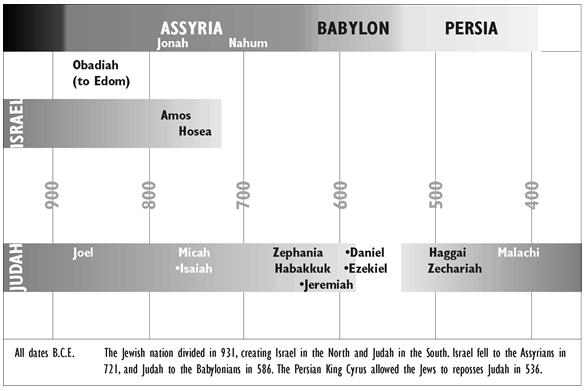By Tyson Thorne

Haggai identifies himself as a prophet (1.1) and Ezra the priest corroborates this (Ezra, 5.1). The prophet Haggai has taken careful steps to date his messages (1.1, .15; 2.1, .10, .18, .20), 520 B.C. by the modern calendar. He is a prophet to the returned exiles of Judah.
Zechariah identifies himself as the grandson of Iddo, a priest who was in the first group to return from the exile (Nehemiah 12.4-.16). Zechariah, therefore, is another example of a priest called prophet. Zechariah worked alongside Haggai (Ezra 5.1 and 6.14) to encourage the people’s hearts after their stern warning from the Lord (Haggai1.1-.11) a couple months before. Hence, Zechariah’s prophecy is dated with Haggai’s around 520 B.C.
Haggai is the first prophet of the returning exiles. A great amount of history has passed to reach this point, including the end of the Babylonian Empire, the rise to power of the Persian Empire, the absence of a Jewish nation, and now the resurgence of Jewish nationalism and the beginnings of a national restoration. The chart below offers a timeline-like understanding of the significant events, and a chronological placement of both the major prophets (marked with an •) and the minor prophets.
There is much-too-much history to relate between the time of Habakkuk and Haggai (nearly 100 years of history!), and there are even a couple of rulers (Cambyses and Darius I, Persian kings) the Bible doesn’t even acknowledge. May it be sufficient to say that the Jews remained their national identity, unlike the other ancient kingdoms, because of their worship of YHWH. When the other nations, Canaan, Philistia, Egypt, etc. formed they also formed distinct religions, usually idolatry. Their religious practices helped to differentiate the varying kingdoms. When one nation conquered another, their god proved the strongest, and the conquered peoples changed their allegiance. Not so the Jews, who maintained belief in their God even after they had been routed and taken captive by the Assyrians and Babylonians.
The Persian Empire, after integrating the know-how of the Assyrians, and the artistry of the Babylonians, found themselves increasing challenged financially. The empire had conquered much of the known world, and there were no other nations to spoil and plunder. A new source of income had to be found quickly! It was then the Persians decided to “downsize.” Rather than have one people united under the empire, it would be better to have several nation-states, each with their own economy, under one empire. The first test group would have to be a people who had retained their national identity, the Jews. Hence the great return of 536.
|
|

